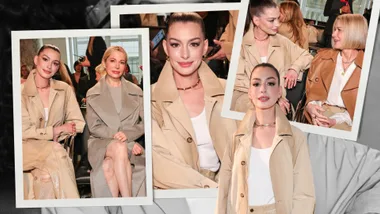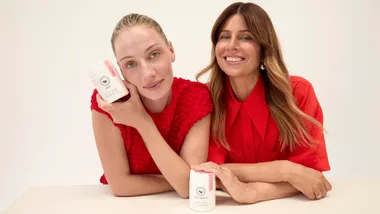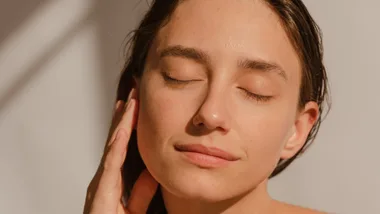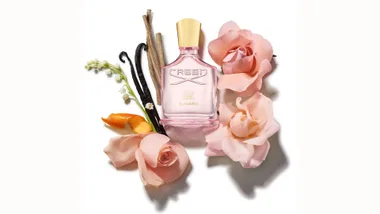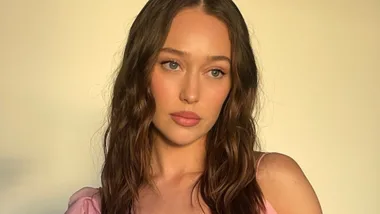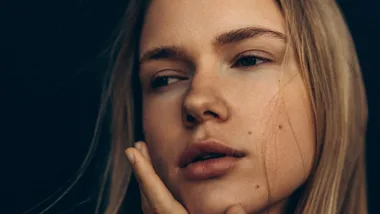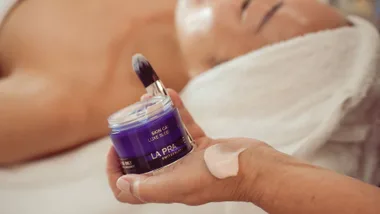Not many people know curls like Rumbie Mutsiwa knows curls.
Long before the modern-day natural hair movement reached Australia, Rumbie arrived from Zimbabwe and found a lack of hairdressers specialising in Afro hair.
Soon after, she quit her job in geriatrics and began an apprenticeship in hairdressing, making it her own personal mission to study all there is to know about Wavy, Curly and Afro hair.
Fast forward to 2020 and she’s been the proud founder of Rumbie & Co salon in Chippendale (six years and counting), and this year launched her own namesake haircare line.

Rumbie is a pioneer for curl-confidence and a wealth of knowledge for textured hair types.
Here, she lends her expertise to marie claire, sharing valuable curl care advice for those throwing keratin treatments, weaves and straightening out the door.
How to tell which curl type you have
Just like our skin type, no two curl kinds are the same.
“There’s a curl typing system that was created by Andre Walker, that classifies different types of curls and how they would behave normally,” says Rumbie. “This system also gives a rough idea to consumers of what they could use for best curl performance.”
With ‘type 1’ reserved for straight hair, there are three types of curls: wavy (type 2), curly (type 3) and Afro (type 4). These curl types then have subcategories (a, b and c), in order of increasing tightness. You can find examples of these curl types and advice on how to identify your texture via the Rumbie & Co website.
However, like most things in beauty, Rumbie says a correct curl diagnosis will always come down to the individual. “Each head of curls [has] many other variables like personal life routine, density, porosity, hair diameter etc, that we’d like to cater to.” It’s for this reason she recommends booking in with a curl specialist if you’re after an effective and personalised routine.
Otherwise, she says the most fail-proof technique is just to hydrate, hydrate and hydrate.

The ‘no poo’ method vs the ‘curly girl method’
Both the ‘no poo’ and ‘curly girl method’ involve cutting shampoo from your curl care routine, a technique Rumbie isn’t such a fan of.
“I don’t believe in not shampooing and cleansing your hair and scalp considering how much product can go into maintaining curly hair,” she tells marie claire. “Washing your scalp and hair with conditioner is like washing your body with lotion; it will never really be clean.”
Considering the popularity of these techniques, Rumbie’s stance came as a surprise, but not so much once she explained that, “the notion of not shampooing was developed when curly-haired people struggled to find shampoos that were curl safe, [ones] that did not strip their hair [and leave] it feeling dry and brittle.”
It’s a big reason why Rumbie launched her own range; there were no shampoos on the market that cleansed curls without stripping them.
Likening using the wrong shampoo to eating soup with a fork, she says she’s all for shampooing (the soup in this scenario) as long as you’re using the right product (or in other words, a spoon).

How to care for curls while you sleep
Before you dive into bed, Rumbie has three words of advice for curl types: sleep on silk.
“Tie your hair up in a pineapple and sleep on a silk pillowcase,” she instructs. For those who experience frizz, she says silk pillowcases and scarves will become your ‘best friends’. “Silk will minimise friction between the curls; this will decrease curl refreshing in the morning [and] potentially you’ll be able to just get up and go”.
If your curls were defined the day before, Rumbie says you should wake up to them still intact. But if you do experience some flatness, she recommends getting “your fingers to your scalp and moving them in circular motions to re-create volume, backcombing of sorts.”

The best (and worst) curl care advice
If you only remember one of Rumbie’s wise words of curl wisdom, it should be ‘hydration’.
“Get yourself well researched on curly hair products,” she advises. When it comes to ingredients, she says some synthetic sulphates can be drying and silicones will only provide a cosmetic slip to the hair, “rather than actually penetrating the hair shaft to nourish it”.
And while there are many ‘wrong’ ways to treat curly hair, she says the one she can’t dissuade enough is treating curly hair as though it’s straight. “This leads to frustration and a decreased love for one’s hair,” she warns.
Instead, if you nail a good nighttime routine, she believes you’ll save so much time and find your hair is full of personality and versatility.
“Curls are not hard to maintain,” she insists, “If it’s complicated, you are doing it wrong and there’s a better way.”


